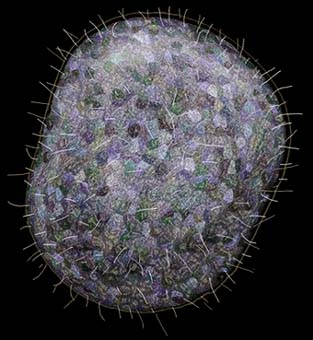I was intrigued by the reference to a possibly ancestral-to-metazoans "choanocyte," as I'd never heard of such. It was a slip on the author's part. Choanocytes, specialized cells of sponges, are homologous with free-swimming choanoflagellates, which sometimes go colonial.
An article on choanoflagellates as possible ancestors to metazoans.
Anyway, back to the first link now:
So. The very first step is the formation of aggregates of cells. In Unicellular organisms, each cell is an individual and, therefore, each cell must complete all of life sustaining and day to day tasks for itself including metabolism (ana- and cata-bolism) and (a)sexual reproduction, once maturity or adequate cell size is reached. Either method of reproduction occurs only if the cell takes a break from metabolism, so it is one or the other. Cells that tend to cluster together can bend the rules a little bit because they have the ability to divide the labor. We believe that an increasing division of labor was a trend in early animal evolution. In its earliest form an aggregation of cells might dedicate some members to the task of reproduction while the remaining cells handled the metabolic requirements of the group as a whole. As you might guess, with all the individuals working together, the colony can still continue to grow even while it is reproducing. Further if all members of the colony are related, then you can argue that the inclusive fitness of the colony is greater than it would be for any one individual cell out on its own. Suddenly there is a real fitness advantage to being a colony.Later down, we have trichoplax adherens mentioned as an early food-ingester. It's a weird wee beastie:

FWIW.